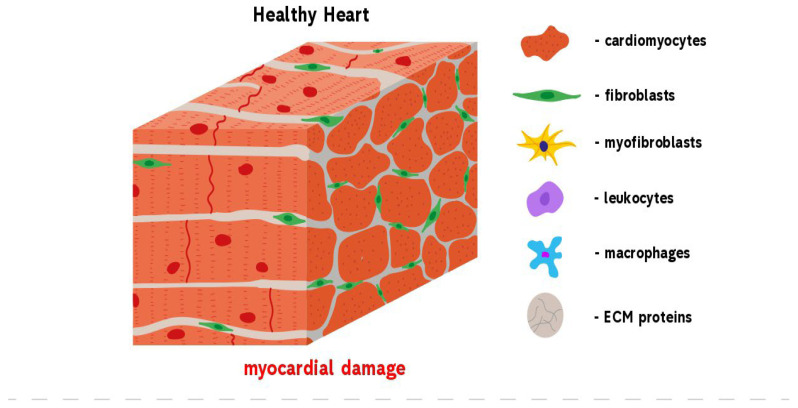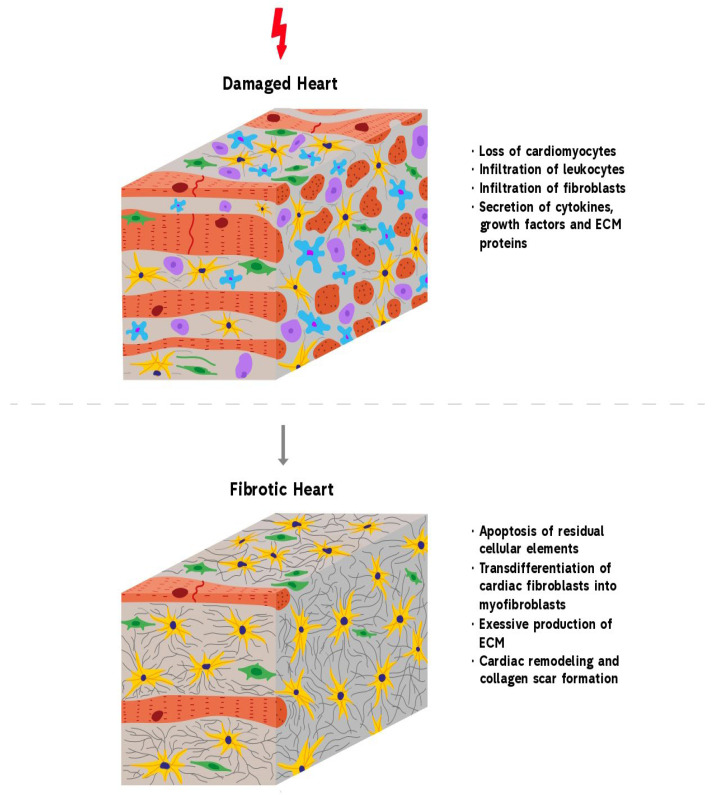Figure 1.
Development of reparative fibrosis in the heart. A healthy heart contains cardiomyocytes that are mainly involved in the contractile function of the heart. An injury to the heart results in myocardial damage. This activates repair mechanisms, leading to the formation of fibrosis. Heart trauma causes the death of cardiomyocytes that express DAMP molecules and by this induce the infiltration of leukocytes and fibroblasts into the damaged area. At the same time, cardiac fibroblasts begin to trans-differentiate into pathological myofibroblasts which, in turn, begin the over-production of ECM proteins. When the wound is cleared from phagocytosing dead cells and matrix debris, resident cells undergo apoptosis and the collagen-based scar is formed.


